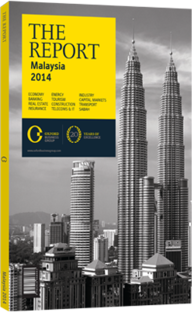A steady head: Malaysia prepares to lead the transition to a single economic market
The year 2015 is a landmark one for both Malaysia and ASEAN, as the 10-member grouping moves to establish the ASEAN Economic Community (AEC) under Kuala Lumpur’s (KL) chairmanship. Malaysia’s government has been gearing up for this challenge for some time too, signalling the approach it may take via a series of policy speeches. In these, Prime Minister Najib Razak and other officials have outlined a people-centred approach, specifically from an economic, political and security, and socio-cultural standpoint. This is likely to add emphasis on activities to enhance ordinary ASEAN citizens’ awareness of and participation in the AEC, while also seeking to strengthen the association’s basic institutions and decision-making mechanisms.
A Stronger Community
Of ASEAN’s three pillars – the AEC, ASEAN Political-Security Community and ASEAN Socio-Cultural Community – it is the first that has generally had the most impact so far, although blueprints for the implementation of all three come to a conclusion on December 31, 2015. The AEC foresees an economically integrated ASEAN region that is well integrated into the world economy. The 2015 deadline does allow the less economically developed member states – Myanmar, Cambodia, Vietnam and Laos – a longer period to achieve this ambition, but the larger economies – Thailand, Indonesia, Singapore, Brunei Darussalam, the Philippines and Malaysia – have all been working hard to meet the 2015 goals.
Benchmarks
The most recent ASEAN-wide measure, the March 2012 Scorecard, which concluded that member states had, on average, met 65.9% of the objectives in pillar 1 (the creation of a single market and production base), 67.9% of the objectives in pillar 2 (the creation of a competitive economic region), 66.7% of the objectives in pillar 3 (the creation of equitable economic development) and 85.7% of the objectives of pillar 4 (integration into the global economy).
While Malaysia is generally thought to have exceeded the ASEAN average in most areas, the latter does not provide a country-by-country breakdown of its figures. In September 2013 Malaysian officials told local media that the country had scored around 80%.
Work To Do
At the same time, delays are widely expected across ASEAN regarding the less tangible non-tariff barrier areas to trade integration. There is also a question mark over implementation of policies, particularly regarding Customs and on-the-ground difficulties in ensuring equal market access. This is one of the issues that Malaysia’s people-centred approach seeks to address. To this end, PM Najib delivered a speech in April 2014 in which he said that only more active involvement in ASEAN policy by all sections of the community would advance regional integration beyond “the domain of elites and specialists”.
In addition, he identified several areas Malaysia is likely to concentrate on during its 2015 chairmanship. He stated that ASEAN must be properly funded. The secretariat currently receives a flat, $1.7m fee per member, delivered annually. Malaysia looks likely to seek a minimum level of contribution, delivered every three or five years, with members free to contribute more if they wish. He also added that ASEAN had to address the tension between a consensus-based, ‘ASEAN way’ and a consistent, rules-based approach to issues. This may well be crucial in establishing greater transparency in policy-making and implementation.
The organisation’s goals must also be expressed more concretely, in measurable terms, he said, while environmental and governance pillars should also be added to the AEC, particularly the recurring problem of haze and smoke from forest and plantation fires – an issue demanding a coordinated and integrated ASEAN response. A final aim was to make ASEAN’s citizens more aware of its remit and goals.
The prime minister also remained confident that the AEC would be brought about on time. To achieve this, KL will have to draw on many of the lessons of what has been a challenging year for Malaysian diplomacy, in particular the peace accord reached in the southern Philippines, which owed much to KL’s good offices.
You have reached the limit of premium articles you can view for free.
Choose from the options below to purchase print or digital editions of our Reports. You can also purchase a website subscription giving you unlimited access to all of our Reports online for 12 months.
If you have already purchased this Report or have a website subscription, please login to continue.

